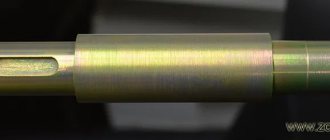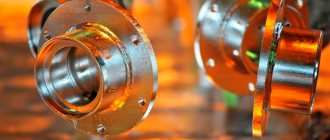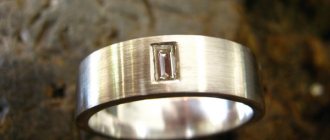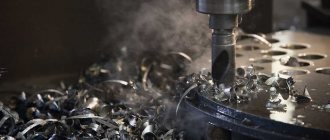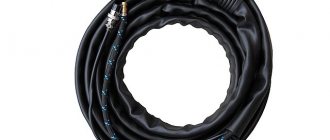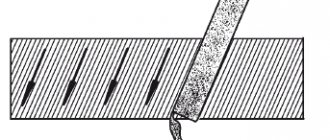Electroplating of metal is an electrochemical method of protection from adverse external influences. A thin metal film protects parts from chemicals and moisture, extends service life and improves appearance.
The technology of applying galvanic coatings is simple and economical, due to which it has become widespread in various fields:
- Construction . The galvanic method is used to coat metal structures used in the open air.
- Aviation and mechanical engineering . To protect parts from exposure to adverse factors.
- In the instrumentation and electronics industries, electroplating is used to protect active metal contacts.
- Medicine . Used in the production of medical and surgical instruments.
- Chemical industry . For the manufacture of laboratory glassware.
- Production of consumer goods , including sanitary ware, dishes, interior items, furniture, etc.
Principle of galvanization method
Electroplating is a process that creates a metal coating on an original part. This method involves the use of an electrolyte. The electrolytic composition is selected in accordance with the desired result and the characteristics of the metal from which the workpiece is made.
To start the process of metal electroplating, two anodes are needed, connected to a current source. Connecting a workpiece placed in the electrolyte to the negative contact starts galvanization. In this scheme, the workpiece being processed is the cathode.
An important point is that the structure of the formed coating is directly affected by the current density. In this case, it is defined as the ratio of the current strength to the surface area of the workpiece.
Goals of the procedure
The galvanization technique can be used to achieve a variety of purposes. Most often, this technology is in demand to improve the aesthetic and performance properties of processed parts and structures. It can also be used if it is necessary to obtain exact copies of samples with particularly complex relief - this method of using the method is called electroplating.
Another, no less popular purpose for using technology is the processing of ferrous metals. In relation to the galvanizing procedure, galvanization is the formation of a zinc electroplating coating on ferrous metal workpieces. This coating has outstanding anti-corrosion characteristics. Workpieces (structures, parts) processed using this method can subsequently come into contact with water and be used in a humid environment for a long time, while maintaining their strength characteristics.
Titanium and its alloys.
Titanium is the most important structural material with a number of unique properties. Titanium is light, which is due to its low density (4540 kg/m3). It is almost 2 times lighter than iron, although it is inferior in this indicator to aluminum by the same amount. Along with being lightweight, titanium is highly durable. Unique is titanium’s ability to passivate and, as a result, its exceptional corrosion resistance. Industrial gases, salt water and oxidizing agents do not cause any harm to titanium. However, despite all the positive qualities, titanium is expensive, difficult to process and mold, and has a high coefficient of friction. Soldering and welding titanium is complex and time-consuming. It is 24 times worse at conducting electricity than copper, 16 times worse than aluminum and 4 times worse than steel. Titanium is inferior in thermal conductivity to aluminum by almost 15 times, and steel by 5 times. In terms of thermal conductivity, titanium is also 15 times worse than aluminum, and steel by 3.5 times. At high temperatures, titanium actively interacts with oxygen, nitrogen, carbon, halogens (chlorine, bromine, iodine, fluorine), as well as sulfur. Even at room temperature, titanium is unstable in alkalis and hydrogen peroxide.
The application of protective and decorative galvanic coatings on titanium can improve many of its properties and eliminate its shortcomings. Chrome plating of titanium increases its wear resistance and heat resistance. To increase the electrical conductivity and solderability of titanium, tin plating (tin-bismuth), copper plating and silver plating are used. Anti-friction properties are improved when coated with tin-lead and lead. Nickel and nickel-phosphorus alloy (chemical nickel) protect titanium from the effects of alkalis at any concentration and temperature. The appearance of titanium is enhanced by shiny chrome, nickel and tin-bismuth coatings. Anodic oxidation is often used for decorative finishing of titanium. In this case, unlike colorless translucent oxides on aluminum, a colored film is formed on titanium. Its color depends on the voltage applied to the part, which can reach up to 120 V. Anodizing can be used to paint titanium in light green, dark gray, blue, black, gold and other colors.
Applying metal coatings to titanium requires a lot of experience and presents significant challenges. Due to the ability to passivate almost instantly, titanium always has a layer of oxides on its surface, which sharply impairs the adhesion of coatings. In addition, hydrogen easily diffuses into titanium during surface preparation. Accumulating at the base/coating interface, it will also cause peeling and deteriorate the physical and mechanical properties of the part.
Advantages of the electroplating method
Compared to other methods of protection, the galvanic method of coating metals has a number of unique advantages:
- The protective layer is characterized by uniform thickness, high density and adhesion to other materials.
- The coating can be applied to structures of any shape.
- The method increases the high anti-corrosion properties of metals, extending their service life.
- The coatings are highly wear-resistant and resistant to mechanical stress.
- Electroplated coatings have high aesthetic characteristics, which has made the technology popular in design.
- Economical. The technology does not require complex equipment and high costs for organizing production. At the same time, it is in demand in almost all spheres of the economy, which makes it not only promising, but also highly profitable.
Quality control
Requirements for the quality of galvanic coating depend on the operating conditions of the processed product. To assess application, the following types of control are used:
- Assessment of the appearance of a part through visual inspection, comparison with reference samples (surface cleanliness, color, presence or absence of gloss).
- Determination of the thickness of the galvanic coating and porosity is carried out in laboratory conditions (measurement).
- Corrosion resistance according to TU or GOST (test).
- Mechanical, physical stability (reflective properties, ductility, wear resistance, electrical and temperature resistance, hardness, etc.)
Functions
Galvanic coatings are divided into several types depending on their purpose:
- Protective . Used to isolate metals from the effects of aggressive environmental factors.
- Protective and decorative . In addition to protective, they have an aesthetic function.
- Special purpose . Galvanization is used to give products new properties, for example, improving performance characteristics, restoring the original shape and size of products.
Types of galvanic coatings
To protect metal products, various types of galvanic coatings are used, including those made of precious metals. They are rarely used, as a rule, in radio engineering, instrument making and jewelry production.
The most widespread are:
- Copper . It is not used independently in industry. This is due to the fact that copper quickly oxidizes when interacting with oxygen. Most often it is used as a sublayer, to improve the quality of the coating, in combination with other metals: nickel and chromium.
- Chrome . Chrome plating is widely used in industry to reduce friction in mechanisms, increase wear resistance and corrosion resistance. It is used not only for protection, but also for restoration of metal parts, as well as for decorative purposes, since the coating has a beautiful mirror surface.
- Zinc . Galvanizing is one of the most popular technologies. Galvanic coating has a high protective effect, which allows you to extend the service life of metal products for decades. Galvanized items have become popular among decorators and are successfully used for interior decoration.
- Nickel . Characterized by durability and high aesthetic properties. Nickel plating is used in many areas: the production of plumbing fixtures, construction, mechanical engineering, the chemical industry, medicine, and the production of consumer goods. Nickel often acts as an underlayer in chrome plating. It is actively used to create decorative products because it can be used on non-metallic surfaces, such as glass, ceramics, etc.
Recently, decorative items that imitate antique ones have become very popular. Copper has proven to be a fertile material for decorators. It is available, easy to process, and the galvanic coating process does not require large financial costs. Its properties make it possible to galvanize unusual materials, such as plants, and create unique decorations.
Compatibility of processed metals
When using the galvanic method (in the selection of contacted metals), it is necessary to take into account their galvanic properties. This also applies to any production where products are made from different metals. The fact is that the interaction of dissimilar metals leads to a phenomenon called contact corrosion - for example, the use of copper rivets to fasten aluminum sheets will lead to the creation of a galvanic couple and, as a result, severe corrosion.
Each of these metals has its own electrode potential. Upon contact with an electrolytic composition, one of them becomes an anode and the other a cathode. During the reaction, aluminum is the anode. Copper, in this case acting as a cathode, contributes to the rapid destruction of aluminum.
It must be taken into account that almost all dissimilar metals that interact with each other cannot be guaranteed to be protected from corrosion. The reason is that when metals come into contact, even moisture in the air can become an electrolyte: its particles are quite capable of starting the galvanization process.
This table provides data on the compatibility of galvanic pairs:
Characteristics of galvanic coatings
The results of galvanization of parts are assessed by monitoring the properties of the resulting coating. It has the following properties:
- Electrical parameters of the coating . In the manufacture of conductive components, this characteristic of the electroplating of products is key;
- Texture. Depending on the chosen galvanization technique, the coating may have varying degrees of surface roughness;
- Hardness _ This coating characteristic is assessed using specialized measuring equipment.
Stainless steel.
Stainless steel is an alloy of iron and carbon, predominantly alloyed with large amounts of chromium and nickel. From the name of this structural material it is clear that it is mainly used in environments that cause active corrosion of ordinary steel. Thus, stainless steel is stable in industrial atmospheres and water, and resists the effects of sulfuric acid well. At the same time, stainless steel is difficult to solder, has a fairly low coefficient of friction, conducts electricity poorly, and is resistant to alkalis (unlike carbon steel) due to the presence of chromium in it. However, all these disadvantages are effectively eliminated by electroplating.
The difficulty of coating stainless steel is associated with the presence on the surface of the parts of a thin, durable passive film of chromium and nickel oxides, which does not allow the coating to adhere well to the base after conventional preparation technology. This film is easily etched off, but almost instantly forms again in air. Therefore, for galvanizing stainless steel, more complex methods are used than for processing conventional steel.
Using such methods, stainless steel can be chrome-plated, tin-plated, nickel-plated, copper-plated, etc. Nickel is used to enhance the shine of complex-profile surfaces instead of mechanical or electrochemical polishing. Also, thanks to nickel, stainless steel parts are completely protected from the effects of alkalis. Chrome increases wear and heat resistance. To protect against the appearance of a corrosive galvanic couple when paired with aluminum, a tin-bismuth alloy is used. Copper imparts spark-proof properties, facilitates make-up, protects against scuffing and increases electrical conductivity. The black zinc coating is decorative. The overall corrosion resistance of stainless steel can be improved by chemical passivation.
Advantages:
- High atmospheric corrosion resistance;
- Stability in a mixture of strong acids containing several percent HNO3, but in the absence of HCl and HF;
- Stability at 300° C in H2O, HNO3 and organic acids;
- Acceptable weldability.
Flaws:
- High price;
- Increased fragility in weld areas.
Materials and equipment used
To apply electroplating, certain materials and equipment are required. To apply a chrome surface, zinc and other metals to workpieces, standard galvanizing equipment is used - the difference when using the listed types of processing will be in the composition of the electrolyte, the current density used and the procedure modes.
The formation of metal coatings is carried out using the following equipment and materials:
- galvanic baths - containers for electrolyte (solution that ensures the start of galvanization);
- heating system (needed to heat the electrolyte to the required temperature);
- a device that provides direct current (a necessary condition is the presence of a voltage regulator).
Galvanization process steps
The galvanizing process consists of several stages:
- Preparing the part for processing . The longest and most labor-intensive stage, because The quality of the surface has a decisive influence on the degree of adhesion of the layers. Preparation consists of cleaning using various devices and mechanisms, grinding, and treating the part to remove dirt and grease.
- Preparation of galvanic solution . Its composition is selected depending on the purpose and materials used. Afterwards, the solution is poured into a container or galvanic bath. Metal plasticine is placed in the liquid electrolyte, which acts as an anode carrying a positive charge. The product being processed acts as a cathode.
- Galvanization is the main stage . The electrical network is closed. Positively charged particles of the anode rush towards the cathode, depositing on its surface. The result is a durable, impact-resistant coating. The duration of exposure depends on the materials used and the thickness of the protective layer that needs to be obtained.
Aluminum and its alloys.
Aluminum is one of the main types of structural materials, widely used in electrical engineering, instrumentation, mechanical engineering and aircraft construction. Aluminum is lightweight and corrosion-resistant in the atmosphere due to the thinnest passive film of several nanometers present on its surface. Aluminum conducts electricity and heat well. The price of aluminum is lower than other non-ferrous metals, and natural reserves are huge. However, aluminum also has a number of disadvantages. It solders worse than tin, does not have wear resistance, and is almost impossible to polish to a mirror shine. In a salt environment, alkalis, hydrochloric acid and a number of other reagents, aluminum actively corrodes. When in contact with copper parts or stainless steel, aluminum forms a corrosive galvanic couple. Therefore, the surface of aluminum often needs to be modified by galvanic or chemical coatings.
Among the coatings on aluminum, two groups can be distinguished: oxide and metal. Chemical and anodic oxidation of aluminum does not present any great difficulties with established production technology. At the same time, the application of metal coatings requires serious surface preparation and the mandatory application of one or two technological sublayers. This is due (as with stainless steel or titanium) to aluminum's ability to passivate almost instantly. The passive film is easily restored to a wet part after etching and prevents further adhesion of the coating and the substrate. Moreover, if aluminum is poorly prepared after metallization, hidden defects may form and the coating may “bubble” during storage even after several months or during soldering. For this reason, all metal coatings on aluminum must be tested for adhesion in 100% of cases by at least two methods according to GOST.
The division of aluminum alloys into wrought and cast alloys is due to the peculiarities of molding semi-finished and finished products from them.
Wrought aluminum alloys are intended primarily for subsequent turning, milling, extrusion, etc. They differ in composition from foundry ones in the absence or insignificant content of silicon in them. When etching deformable alloys, a sludge of alloying additives and intermetallic compounds is formed on their surface, which, during the subsequent mandatory clarification operation, is easily removed with ordinary nitric acid and does not interfere with the coating. During the anodizing process, such sludge dissolves in the electrolyte and also does not accumulate on the surface. The presence of silicon in the aluminum alloy (and, as a consequence, in the etching sludge) would make the processes of oxidation and metallization of aluminum much more complex. Thus, coating of wrought aluminum alloys is easier than that of cast aluminum alloys.
Cast aluminum alloys are one of the main structural materials widely used in electrical engineering, instrumentation and aircraft manufacturing. Cast aluminum alloys are characterized by a high silicon content, which is associated with high complexity in preparing their surface before coating. Any coating of cast aluminum is a complex process due to the presence of an oxide film on its surface and the formation of silicon powder on the surface during etching. All this prevents strong adhesion of the coating to the base. This problem is solved by using special preliminary preparation operations.
By what standards is the quality of the finished coating assessed?
Requirements for galvanic coating parameters are reflected in GOST 9 301-86.
Regarding the layer thickness, the specified regulatory document provides the following instructions:
Deviation from the maximum coating thickness is possible if this deviation does not affect the performance of the product. For parts with complex relief, in bending areas, it is allowed to reduce the layer thickness by up to 50%.
offers galvanization services for metal products in any volume. You can find out more details, place an order or buy the company’s products by calling the phone number listed on the website.
Layer thickness
The thickness of the galvanic coating is determined according to data on the average thickness of the applied layer and depends on the conditions in which the part will be used. They are divided into groups:
- Light conditions (LC) - parts are used in closed heated rooms with a relatively dry atmosphere, or the product will be used for a short period of time in an external environment where there are no active corrosive agents. The thickness of a single-layer coating is about 7 microns, a multi-layer coating is 15 microns.
- Average Conditions (AC) - Parts will be used in environments with average humidity, pollution, small amounts of fuel, industrial emissions or seawater vapor. The thickness of a single-layer coating is 15 microns, a multi-layer coating is 30 microns.
- Severe conditions (HS) - involve the operation of parts in conditions of high humidity, increased levels of pollution with industrial gases, fuel waste, solids, and dust. The thickness of a single-layer coating is 30 microns, a multi-layer coating is 45.
Data on the thickness of galvanic coating of parts in one layer is contained in GOST 2249-43. This includes zinc coatings. Controls multilayer application of galvanic coating GOST 3002-45 (nickel coatings). The thickness of the layer can be changed according to design requirements or in cases where the workpiece is designed for a short service life. The service life of galvanizing is up to 5 years, for other types of coatings – up to 3 years.



